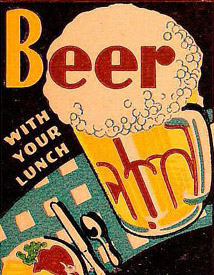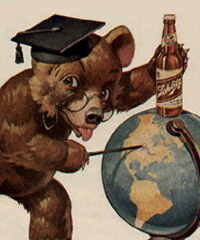Super Bowl Sunday could be called “National Beer Day,” according to one press release, because an estimated $12 million will be spent on beer for consumption before and during the game day.
Much of the discussion centers around Budweiser and Bud Light, since Anheuser-Busch is the Super Bowl’s biggest advertiser. And Miller has co-opted some of the attention with a second Dalmatian commercial. More of the same? Mostly, but look around and you never know what you’ll find.
– Saint Arnold Brewing in Texas posted recipes “just in time for the big game.” Last week the brewery held its first “One Pot Showdown,” cooking contest that requires each recipe to include Saint Arnold beer as an ingredient and to be cooked in a single pot in the Saint Arnold parking lot. The event raised $1,800 for Meals on Wheels. Fried Beer (click on the link for the lengthy recipe), made with Winter Stout, finished first. Amberized Green Chili was second.
– TheStreet.com has “Microbrewed Beer Picks for the Big Game” – a good list if you’re having hedge fund managers over to watch the game.
– Among the “proposition” bets you can place is which will be the first beer commerical at halftime.
And then there’s YouTube.
– Miller has already started showing its second Dalmatian commercial, featured in the Wall Street Journal with A-B’s reaction.
– The Associated Press put together a sneak preview of the A-B ads:
– Of course, you knew we could count on the Marin Institute to demand an end to advertising and marketing beer during the Super Bowl. They might have found it more effective to come up with a spoof like this one:
Sadly, this sort fun doesn’t do any of us beer drinkers much good. Don’t think it’s just an attack on Bud.
 Last night we ate leftover smoked meat and drank Southern Tier Choklat. One, then the other. No pairing involved. Sometimes you just want a beer, maybe even a strong one.
Last night we ate leftover smoked meat and drank Southern Tier Choklat. One, then the other. No pairing involved. Sometimes you just want a beer, maybe even a strong one. Were I inclined to make predictions (not likely) about the Top 10 Beer Trends of 2008 then one would somehow have to include the words “education” and “certification.”
Were I inclined to make predictions (not likely) about the Top 10 Beer Trends of 2008 then one would somehow have to include the words “education” and “certification.” For more about what this is part of
For more about what this is part of